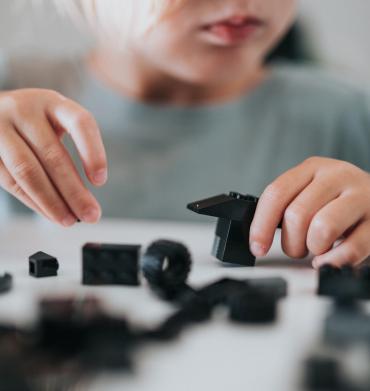Research finds patterns in restrictive and repetitive behaviors based on individual characteristics
October 5, 2021A study published this August in the Journal of the American Academy of Child and Adolescent Psychiatry found differences in restrictive and repetitive behaviors (RRBs) in children with autism based on individual characteristics like age, sex, cognitive functioning, language level and socio-communicative impairments.
Researchers analyzed data from a sample size of 17,581 autistic children and adolescents under the age of 18 from the Simons Foundation Powering Autism Research for Knowledge (SPARK) cohort. Parents and caregivers were asked to complete the Repetitive Behavior Scale—Revised (RBS-R) questionnaire to measure five domains of RRBs: repetitive motor behaviors, self-injurious behaviors, compulsions, insistence on sameness and restricted interests. Caregivers also provided information on their children’s cognitive functioning, language ability and social and communication impairments.
Data analysis found that males are more likely to have severe repetitive motor behaviors and restricted interests. In contrast, females are more likely to engage in self-injurious behaviors and compulsions. No sex differences were found in the insistence on sameness domain.
Further analysis showed that repetitive motor behaviors tend to decrease with cognitive functioning level, language level and age, meaning that they are most severe among younger children with lower IQ and language skills.
In contrast, insistence on sameness and restricted interests were more common in older children with a higher cognitive functioning level. Both domains increase with age until about 8 to 10 years, and then decrease as children’s language and cognitive abilities become more sophisticated. These results imply that insistence on sameness and restricted interests are most likely linked to delays in the development of executive functioning skills. Results also provide a further support for previous suggestions that insistence on sameness serves as early form of coping mechanisms that help autistic children ease their fears by reducing unpredictability in their environment.
Self-injurious behavior showed a similar trend, increasing with age until reaching a peak between 10 and 12 years, and then decreasing significantly. This behavior was associated with lower cognitive functioning and language level, and decreased in frequency as language level increased.
Finally, compulsions were associated with higher IQ and language level. The study revealed that the frequency of compulsions is closely related to language development, with compulsions increasing significantly once children transition from no words to single words, and then decreasing again when they transition from short sentences to long sentences. After peaking at about 5 years old, compulsions decrease slightly until age 10 and then drop significantly until age 16.
Across all domains, higher severity of social and communication impairments contributed to more severe repetitive behaviors. This effect was strongest for the insistence on sameness, followed by repetitive motor behaviors, compulsions, restricted interests and self-injurious behaviors.
These results offer evidence that RRBs are more diverse than previously thought and suggest that some of the RRB types are poorly captured by the currently available instruments. Understanding the distinct ways that these behaviors are affected by demographic, developmental and clinical characteristics can help researchers better assess these behaviors and develop more targeted and effective interventions that improve quality of life for people with autism.








